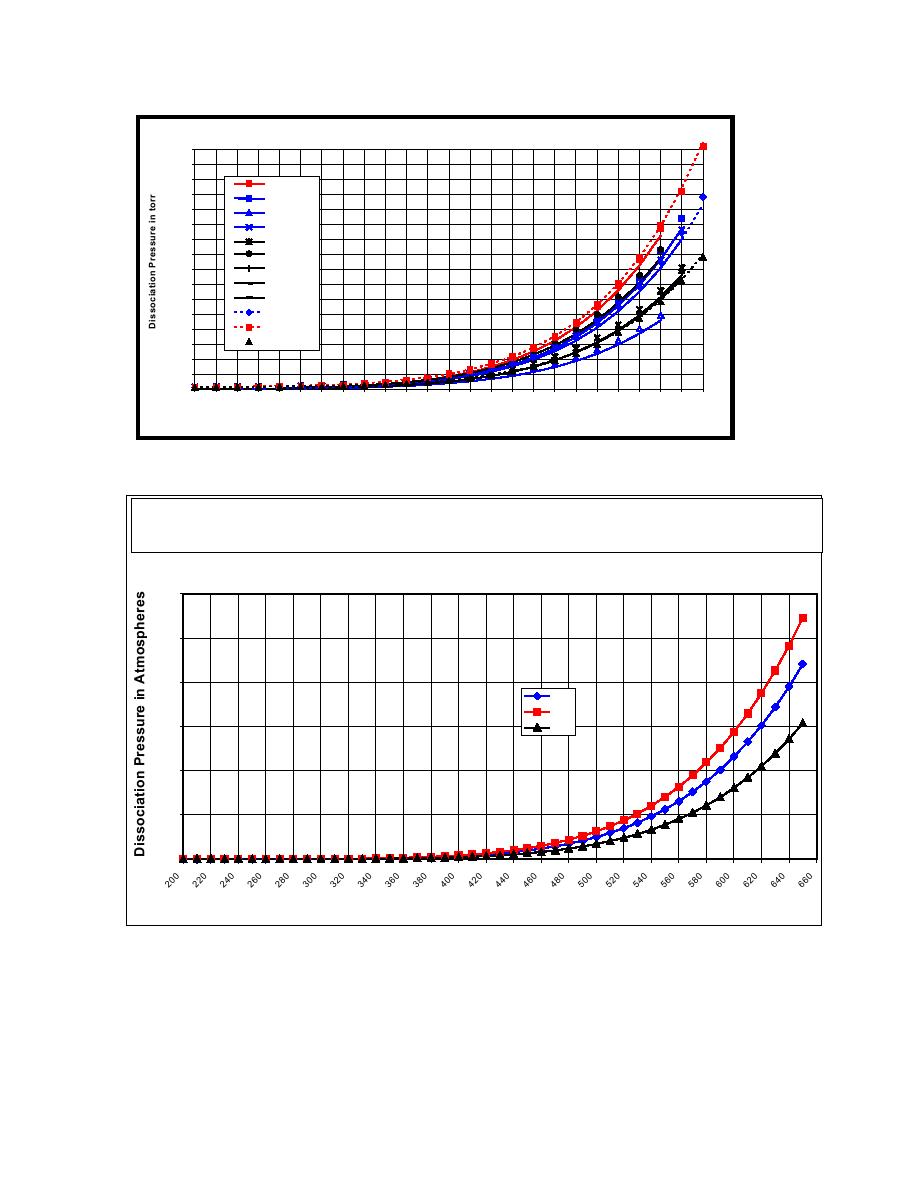 |
|||
|
|
|||
|
Page Title:
Figure 2-4. Dissociation pressure for uranium, hydride, deuteride, and tritide |
|
||
| ||||||||||
|
|  DOE-HDBK-1129-99
1600
1500
1400
UT3-FlAb
1300
UD3-Spd
1200
UD3-DeSe
1100
UD3-WiOt
1000
UH3-Spd
900
UH3-DeSe
800
UH3-WiOt
700
UH3-LiGi)
600
UH3-MoCa
500
UD3
400
UT3
300
UH3
200
100
0
200 210 220 230 240 250 260 270 280 290 300 310 320 330 340 350 360 370 380 390 400 410 420 430 440
Temperature Degrees Centigrade
FIGURE 2-4. Dissociation pressure for uranium, hydride, deuteride, and tritide
Good fit equations for the dissociation pressure of uranium tritide, deuteride, and hydride in units of atmospheres. The data from
various experimenters was used to extend the range from 200 degrees Centigrade to 650 degrees Centigrade.
-(4500/T deg K) +9.4
-(4471/T deg K) +9.461
-(4525/T deg K) +9.27
PatmUD3={10
}/760
PatmUT3={10
}/760
PatmUH3={10
}/760
Dissociation Pressure of Uranium Tritide, Deuteride, and Hydride
60
50
40
UD3
UT3
30
UH3
20
10
0
Temperature in Degrees Centigrade
FIGURE 2-5. Plot of a good fit curve for the dissociation pressure
of uranium hydride, deuteride, and tritide
Each time the tritium is cycled into the system manifolds it picks up impurity gases. These
impurities collect in the bed overpressure gas and may be pumped off to remove them after each
11
|
|
Privacy Statement - Press Release - Copyright Information. - Contact Us |